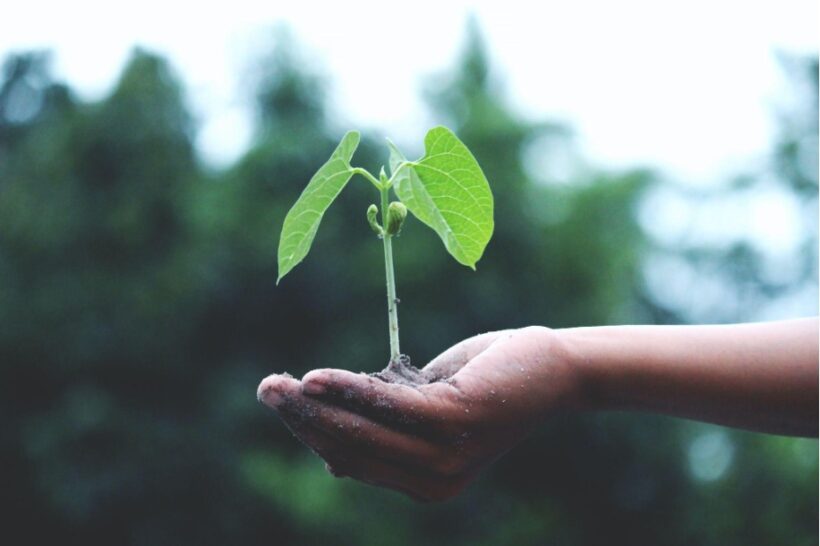 By DR. MIRIAM ACZEL
By DR. MIRIAM ACZEL
As we continue to practice social distancing to keep those around us safe during the pandemic, many of our usual activities are not possible or available. ‘Stress-relief’ activities such as playing team sports or spending time with friends may not be possible. However, we do have a great option to help boost both our mental and physical health—spending time in nature.
Spending time outside (while maintaining a safe distance from others) can be a fantastic way to improve your family’s wellbeing! We may find we are now less physically active, with many increasing their digital screen time on the TV, computer, or mobile phones to stay connected. As more people are working from home and many schools have moved online, it’s even more important than ever to ensure we take care of our physical and mental wellbeing.
Importantly, studies show the benefits of time spent in forests in improving immune responses. According to Richard Louv, the author of the book Last Child in the Woods: Saving Our Children From Nature Deficit Disorder which inspired an international movement to connect children and nature, there is a growing body of scientific evidence that increasing time in nature and getting more ‘Vitamin N’ (for Nature) correlates with reduced stress levels, better mental and physical health and improved cognitive functioning in children and adults. A University of Queensland study found that that people who visit parks for 30 minutes or more each week have significantly improved mental health.
Here are a few suggestions for helping increase your family’s time in nature during these tough times:
Get moving outside!
Get your exercise outside by taking a walk or hike with your family. Nature reserves, urban parks, back yards or tree-lined streets and neighborhoods can be a great way to get your family off their feet and get both exercise and a good dose of Vitamin N. Richard Louv suggests a great way to get kids active and involved is to turn it into a game that he calls “Walk this Way”—mimicking the sounds different animals make along the walk. Louv also suggests encouraging kids to take turns acting as a “hiking leader,” where children direct the walk or hike and set their own pace.
Let kids get dirty!
This is a great option even if you don’t much outdoor space—you can easily set aside some a box of dirt in the backyard or even in a windowsill for kids to dig through. You can even engage kids in some outdoor ‘citizen science’ such as counting worms or other critters, planting seeds and measuring their growth, or using a microscope or magnifying glass to get a closer look. As an added health bonus, there is a growing body of scientific research that suggests that kids can strengthen their immune systems by playing with dirt!
Get planting!
Another great outdoor family activity is to plant a tree. Accessing and caring for nature encourages kids to become lifelong caretakers of the environment. You can either plant or adopt a tree. Even if you don’t have space to plant your own, your family can spend time volunteering to help plant trees in your community. Check out Trees for Oakland for more information on how to get your own family tree. Native planting is also a great way to flex your green thumb—the Friends of Sausal Creek have some great resources on environmental stewardship and native species planting.
Create your own backyard habitat
If you have a backyard or outdoor space, the National Wildlife Federation has a guide to building a backyard wildlife habitat by planting a simple garden to provide a habitat for animals such as brightly-colored butterflies, bees, and birds among other creatures. You can also grow a pollinator garden to help increase crucial biodiversity. And according to Wildlife Watch UK, you can even make a pond using a small tub, some sand and some rocks and adding water to provide a habitat for aquatic critters.
Become backyard scientists
There are many opportunities for outdoor citizen science activities, from cultivating bulb flowers such as daffodils and tulips to counting birds, earthworms, and other backyard inhabitants. Your kids might enjoy identifying different birds in their neighborhood, such as sparrows, blue jays, hummingbirds, or woodpeckers and the different sounds they make. iBird is a great smartphone app that helps you identify birds and contribute to scientific information on the abundance of different bird species.
You can also count and measure the different trees growing in your neighborhood and collect their leaves to help with identifying their species. The Arbor Day Foundation has a great tree identification guide. Tree Snap is another resource that helps identify and monitor different diseases and pests that threaten our forests. You can help protect America’s forests and contribute to a growing body of arboreal knowledge by ‘tagging’ trees your family sees in your backyard or neighborhood or even out in forests. Scientists then use the data you contribute to identify trees for research projects such as monitoring biodiversity and improving tree-breeding programs.
These are just a few of the many ways to get your families safe, active and outdoors, and reap the benefits to mental and physical health. Now more than ever it’s important to think creatively about how we can create healthier, more equitable and nature-filled lifestyles and communities.
Editor’s note: this article originally appeared on the EcoBlock blog
Dr. Miriam Aczel is Leaders in Energy’s Director of Scientific Communications. Miriam is a postdoctoral scholar at the California Institute for Energy & Environment (CIEE) based at UC Berkeley, working on the Oakland Ecoblock project. She is also currently an Honorary Research Associate at Imperial College London’s Centre for Environmental Policy, with a focus on international energy science and policy, with a focus on mitigation of environmental and health impacts of shale gas. Miriam earned her PhD at Imperial College London in 2020, where she was a President’s PhD Scholar. She is also co-founder and co-director of the Amir D. Aczel Foundation for Research and Education in Science and Mathematics, a nonprofit based in Cambodia.



Leave a Reply